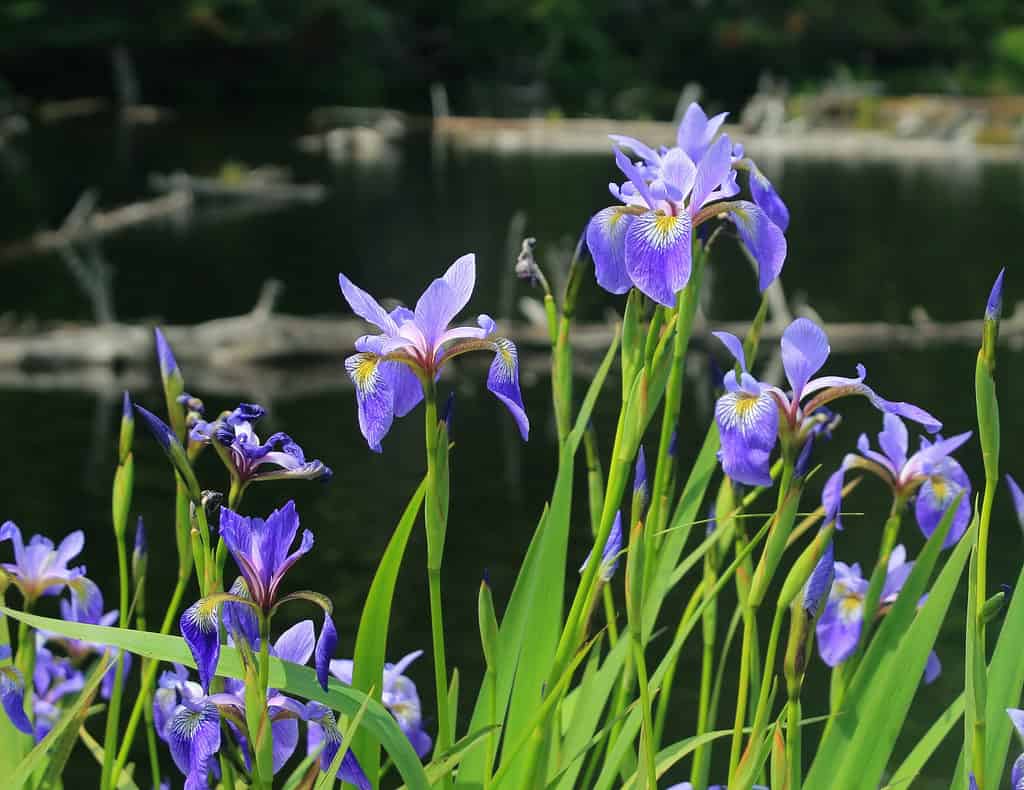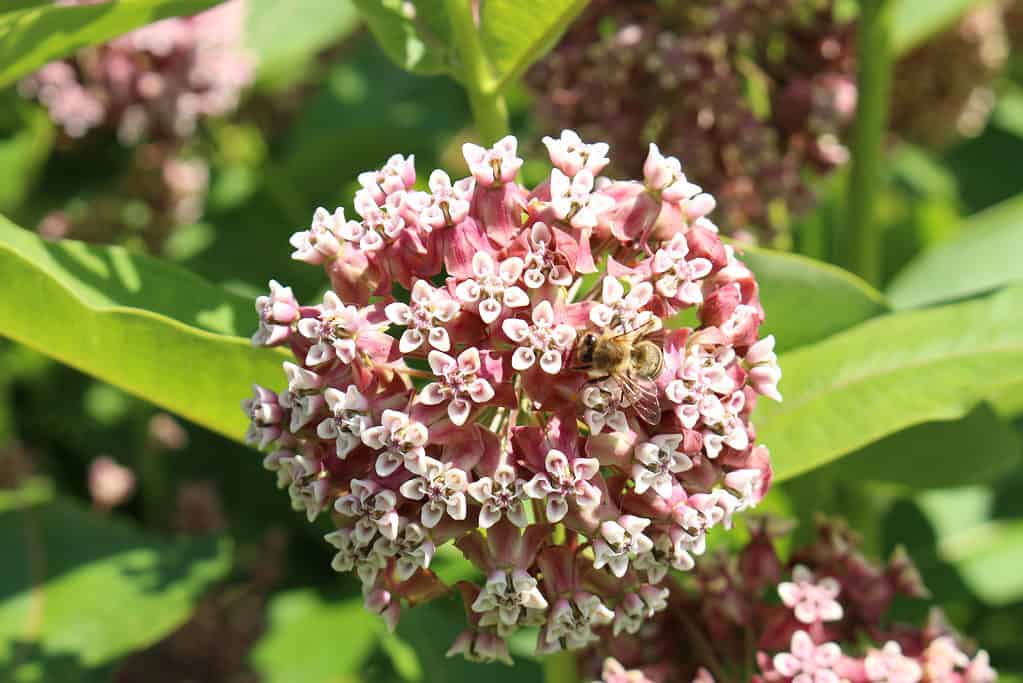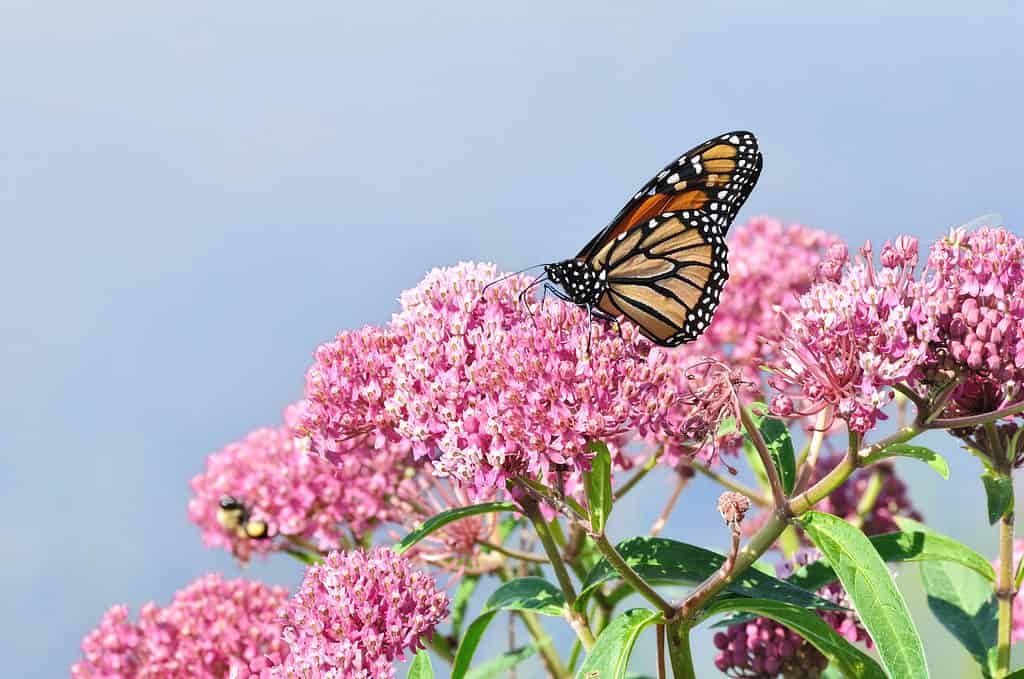Michigan is home to a diverse array of native plants, many of which are well-adapted to the state’s unique climate and environment. The state is home to many types of environments that span as far as the Upper Peninsula near Canada to the Lower Peninsula and the shores of the Great Lakes. Today, we’ll take a look at seven of these native plants and explore some of their key characteristics. Let’s get started!
1. White Pine
The white pine is a tall, coniferous tree that is native to Michigan and can be found throughout the state. It is known for its distinctive blue-green needles and large, cylindrical cones. The white pine is a familiar sight in Michigan’s forests and is one of the most common trees found across the state. Other names for the white pine include the eastern white pine, northern white pine, white pine, Weymouth pine, and soft pine. It is a fast-growing tree that can reach heights of up to 100 feet, and its wood is valued for its strength and durability.
Some common usages of the white pine include pulps, furniture, crates, boats, Christmas trees, and more!

©Ukrolenochka/Shutterstock.com
2. Dwarf Lake Iris
The dwarf lake iris is a beautiful and distinctive native wildflower that is found in Michigan’s wetland areas. It is a small plant, typically growing to a height of only 6-8 inches, but it is well-adapted to life in the wet, marshy conditions found in Michigan’s lake shores and wetlands. The dwarf lake iris has slender, sword-like leaves and showy, purple flowers that bloom in the spring. It is an important food source for a variety of insects, including bees and butterflies, and its seeds are an important food source for birds and small mammals. In addition to its ecological importance, the dwarf lake iris is also valued for its beauty, and it is often used in wetland restoration projects and in rain gardens and other landscaping efforts.
The flower has a very limited range and is endemic to the Great Lakes region, particularly around the northern shores of Lake Huron and Lake Michigan. Additionally, it’s the state flower of Michigan!

©iStock.com/lightphoto
3. Michigan Monkey-Flower
The Michigan monkey-flower is a unique flower on the list as it’s the only flower that’s totally endemic to the state (hence the name). The flower is found only in cold calcareous (chalky limestone) springs, seeps, and streams. It has rounded leaves with tubular flowers that have yellow petals and a red-spotted lower lip. The plants are semi-aquatic and form mats over wet soil or sand deposits that are constantly saturated by flowing spring water.
Due to its specific needs, the Michigan monkey-flower isn’t common and can only be found along the northern portion of the state into the Upper Peninsula.
4. Common Milkweed
The common milkweed is another native wildflower that is commonly found in Michigan. It is a tall, erect plant with oval-shaped leaves and clusters of pink or purple flowers. The common milkweed is a host plant for the monarch butterfly, which lays its eggs on the leaves of the milkweed. The caterpillars that hatch from the eggs feed on the leaves, and the adult butterflies often visit the plant to feed on its nectar. When most people think of a “milkweed plant,” it’s the common milkweed that they are probably thinking of.
There are elements of the milkweed that are edible, and it has been harvested by Native Americans for a very long time.

©iStock.com/mr_coffee
5. Swamp Milkweed
The swamp milkweed is a tall, herbaceous plant that is native to Michigan and can be found in wetland areas throughout the state. It has long, narrow leaves and clusters of pink or white flowers that are popular with pollinators such as bees and butterflies. The swamp milkweed has darker pink flowers than the common milkweed and prefers much wetter conditions than its relative.

©iStock.com/herreid
6. Wild Ginger
The wild ginger is a low-growing, herbaceous plant that is native to Michigan. It has heart-shaped leaves and small, reddish-brown flowers that are typically hidden among the leaves. The wild ginger is an important plant in Michigan’s ecosystems, as it is a host for a variety of insects and other animals. Its roots have a spicy, ginger-like aroma (giving it the name) and can be used as a seasoning in cooking, making it a valuable plant for both ecological and culinary purposes. In addition to its ecological and culinary importance, the wild ginger is also valued for its beauty, especially it unique leaves, and it is often used in gardens.

©Gabriela Beres/Shutterstock.com
7. Sugar Maple
Everyone loves a bit of maple syrup! Sugar maples are native to Michigan and can be found throughout the state. They are tall, deciduous trees that are known for their distinctive, five-lobed leaves and their ability to produce large quantities of sap. The sap of the sugar maple is the source of maple syrup, something that almost everyone loves. The state of Michigan actually has more maple trees than Vermont, the highest producer of maple syrup in the United States. In addition to their role in the production of maple syrup, sugar maples are also important for their wood and are used to make a variety of products. In the fall, the leaves of the sugar maple turn beautiful shades of yellow, orange, and red, adding to the tree’s beauty and making it an important part of Michigan’s natural heritage.

©Mircea Costina/Shutterstock.com
Up Next
The post 7 Native Plants in Michigan appeared first on AZ Animals.
from Animal News, Facts, Rankings, and More! - AZ Animals https://ift.tt/xO4pXKV